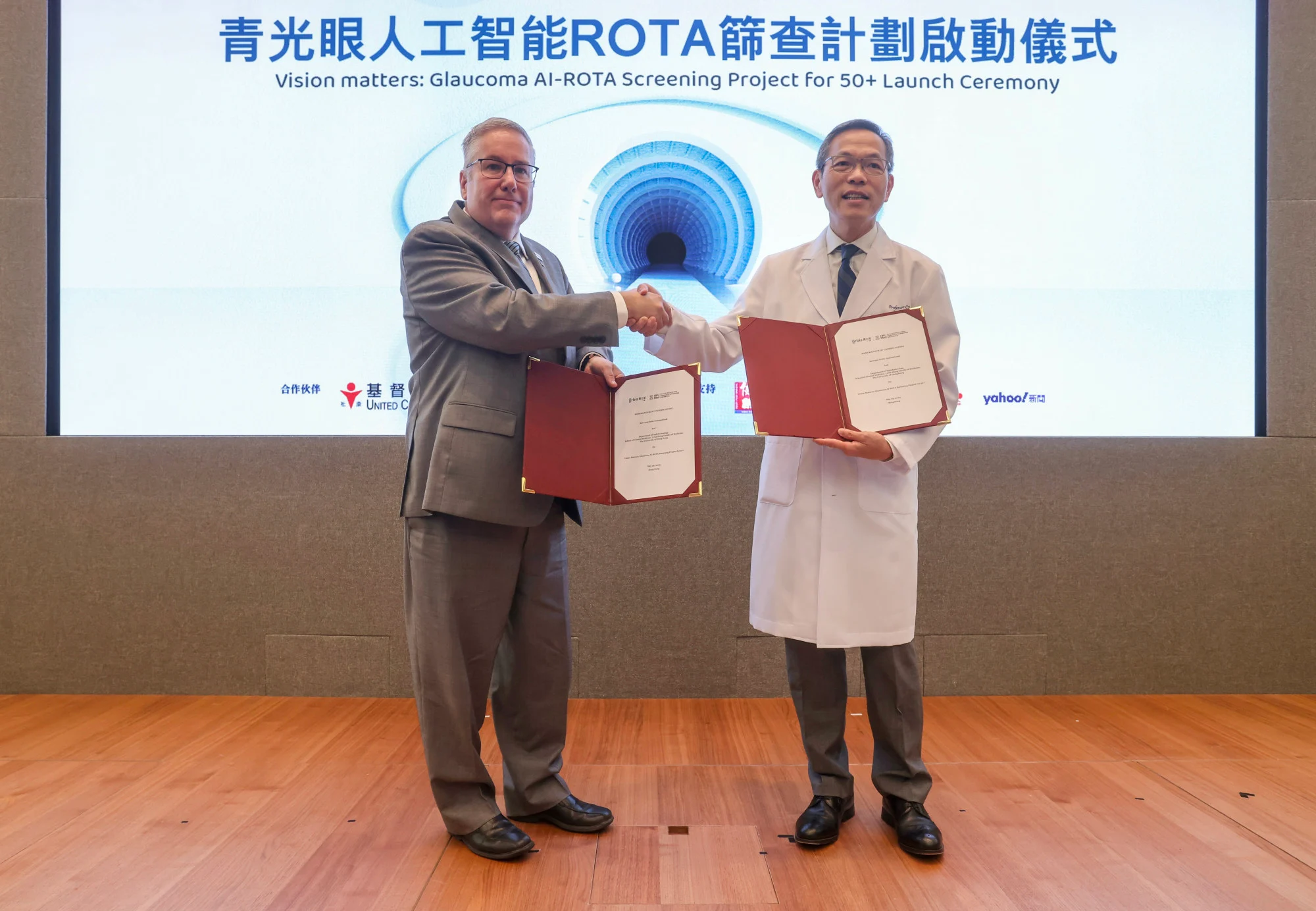
2023年5月29日
<Published in South China Morning Post, 29 May 2023>
- ROTA technology, developed by Hong Kong University, is faster and better able to diagnose glaucoma in its early stages
- Scientists predict ROTA will improve the accuracy rate of diagnosis of hard to spot condition by 30 per cent
More than 3,000 Hong Kong public housing estate residents will be eligible for a free eye check-up from next month as part of a vision test scheme launched by a university and an NGO, which will use new technology better able to detect a disease than can lead to blindness at an earlier stage.
Theophthalmology department at the University of Hong Kong (HKU) and Orbis, a non-profit specialising in blindness prevention, on Monday said they would use ROTA, an optical texture analysis technology developed and patented by the university, for the first time to display the anatomy of the nerve fibre layer of the retina so doctors could check for signs of degeneration linked to glaucoma.
Doctors said the technology would improve the diagnosis accuracy rate for the condition by 30 per cent and improve public health.
“Our shared aim is to raise public awareness of glaucoma and remind Hongkongers why it’s so vital they undergo regular eye checks,” said Derek Hodkey, president and chief executive of Orbis International.

Derek Hodkey (left) and HKU dean of medicine Lau Chak-sing unveil a new hi-tech glaucoma screening programme.
Glaucoma is a common condition where the optic nerve, which connects the eye to the brain, becomes damaged. It is usually caused by fluid build-up in the front part of the eye, which increases pressure on the nerve.
The condition can lead to blindness or severe eyesight deterioration if left untreated.
Christopher Leung Kai-shun, an HKU ophthalmology professor, said early detection was vital to avoid irreparable damage.
He added a study carried out by the university last year found that 72 per cent of early stage glaucoma patients also had nerve damage around an area in the eye that controlled central vision.
“This is a very different concept from what we have known about glaucoma,” Leung said.
He added it was common to associate glaucoma with loss of peripheral sight – called “tunnel vision” – rather than loss of frontal visual perception.
Leung said patients affected with defects in the area that controlled straight ahead sight problems were at a high risk of blindness as they could lose central vision if their condition worsened.
Bonnie Choy Nga-kwan, an ophthalmology clinical associate professor at HKU, added about 90 per cent of glaucoma patients did not seek medical help for the disease. She said the condition was discovered through treatment for other health problems.
Choy said screenings were important because people were unlikely to ask for eye examinations when they had not detected any sight impairment, but very often it would be too late when they did seek medical advice
“Most glaucoma patients won’t go to the doctor. When they do, sometimes I have to regretfully inform them that it was too late and that the only thing I could do was control the condition. But no matter what we do, it cannot be reversed,” Choy said.
Under the revamped glaucoma check, patients will have a shorter test, as the new procedure can incorporate a visual field analysis into the usual optic imaging procedure used to scan their retinas.
“We need patients to fixate on a single spot of light for at least five minutes to test the visual field at present. If the patient is looking around, we will get unreliable results. This is challenging for patients with eye diseases,” Leung said.
But the improved test will only take two minutes as the ROTA technology can be used to obtain visual field information as well.
More than 3,000 public housing families in Southern, Kwun Tong and Tai Po districts will be randomly selected for testing from next month to June 2024.
They will be given invitations to make test appointments for up to two family members aged 50 or over at health centres in their home district.
People admitted to the programme will be given a series of eye examinations, including visual acuity tests, refraction tests, a test for pressure inside the eye and an imaging test for glaucoma.
The hi-tech eye exams are expected to be introduced in other districts next year.
Leung said he hoped to use the check-up programme as a pilot scheme for eye checks which could be introduced into the government’s primary healthcare services.
Eyesight tests are at present not included in the scope of services available at district health centres.
“Some glaucoma patients’ conditions may deteriorate [during a long wait]. That’s why we hope to shift current eye checks to district health centres to reduce the burden on tertiary care or ophthalmologists,” Leung said.
